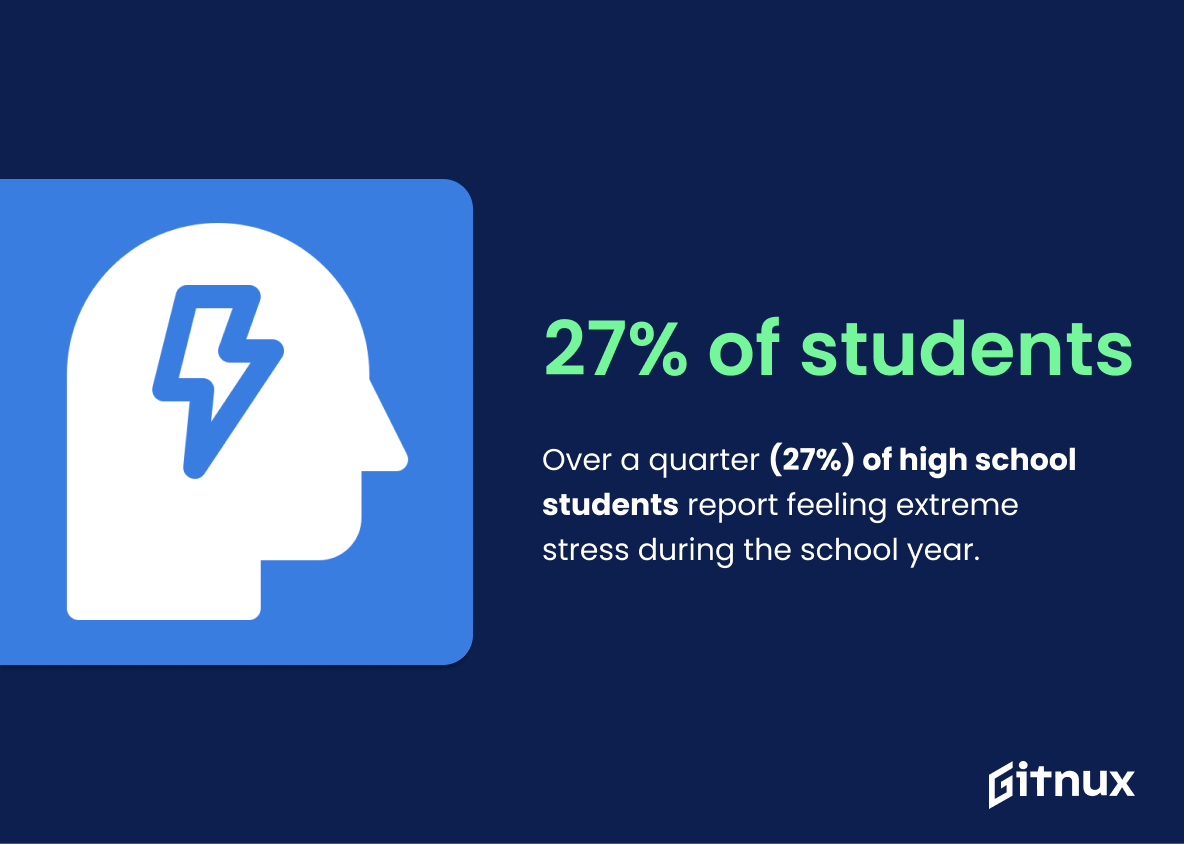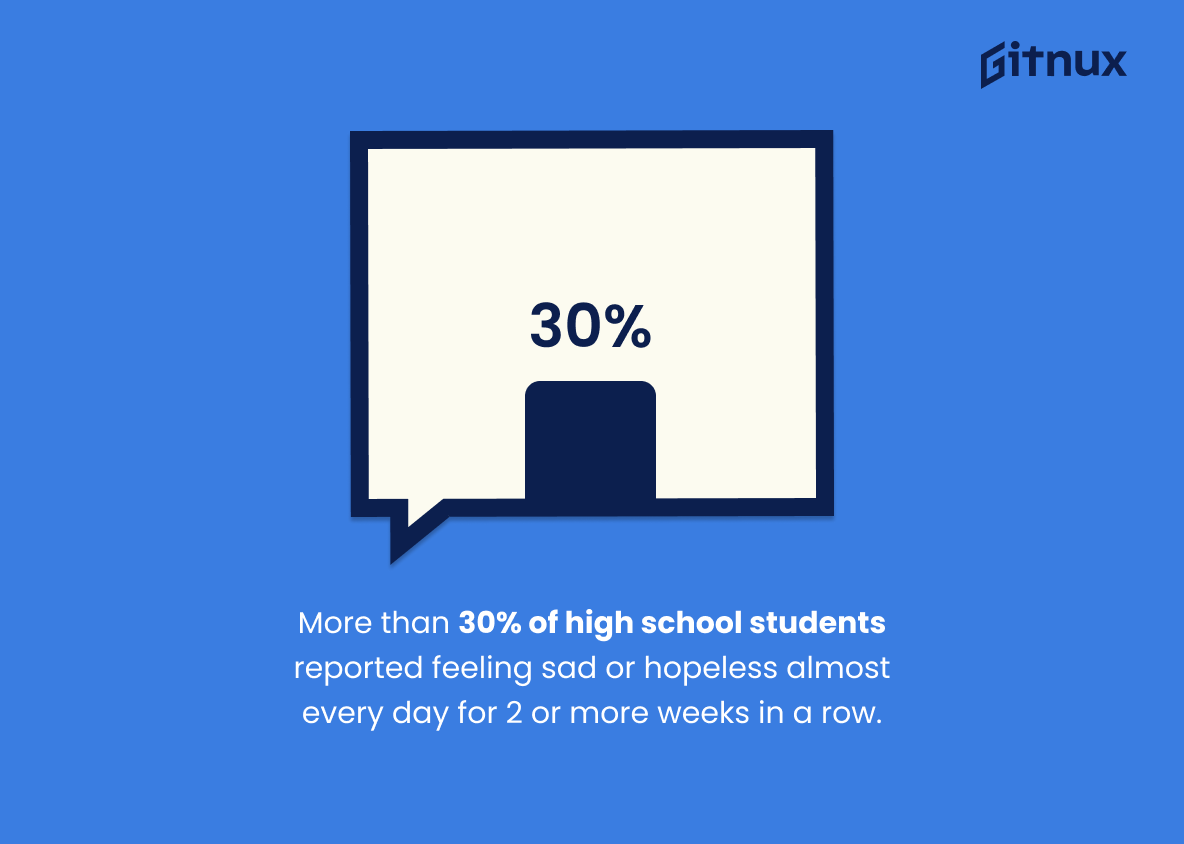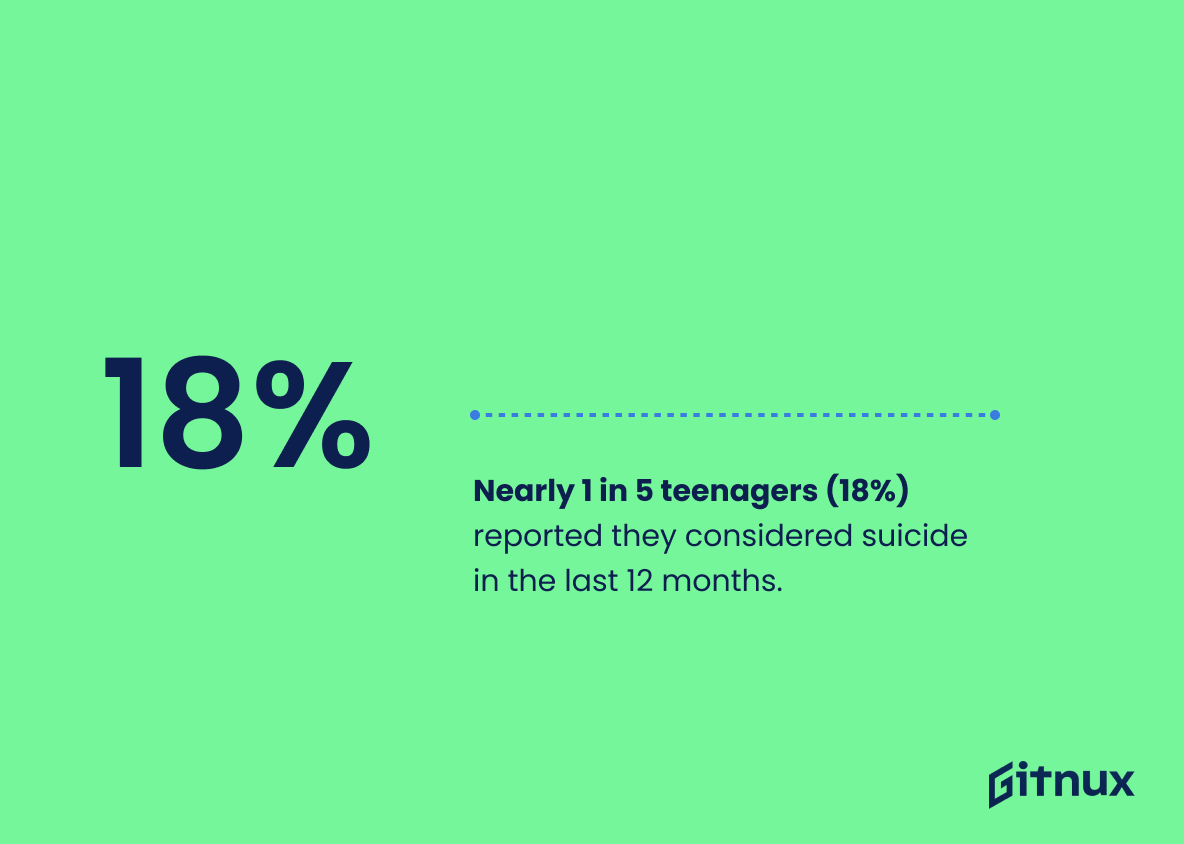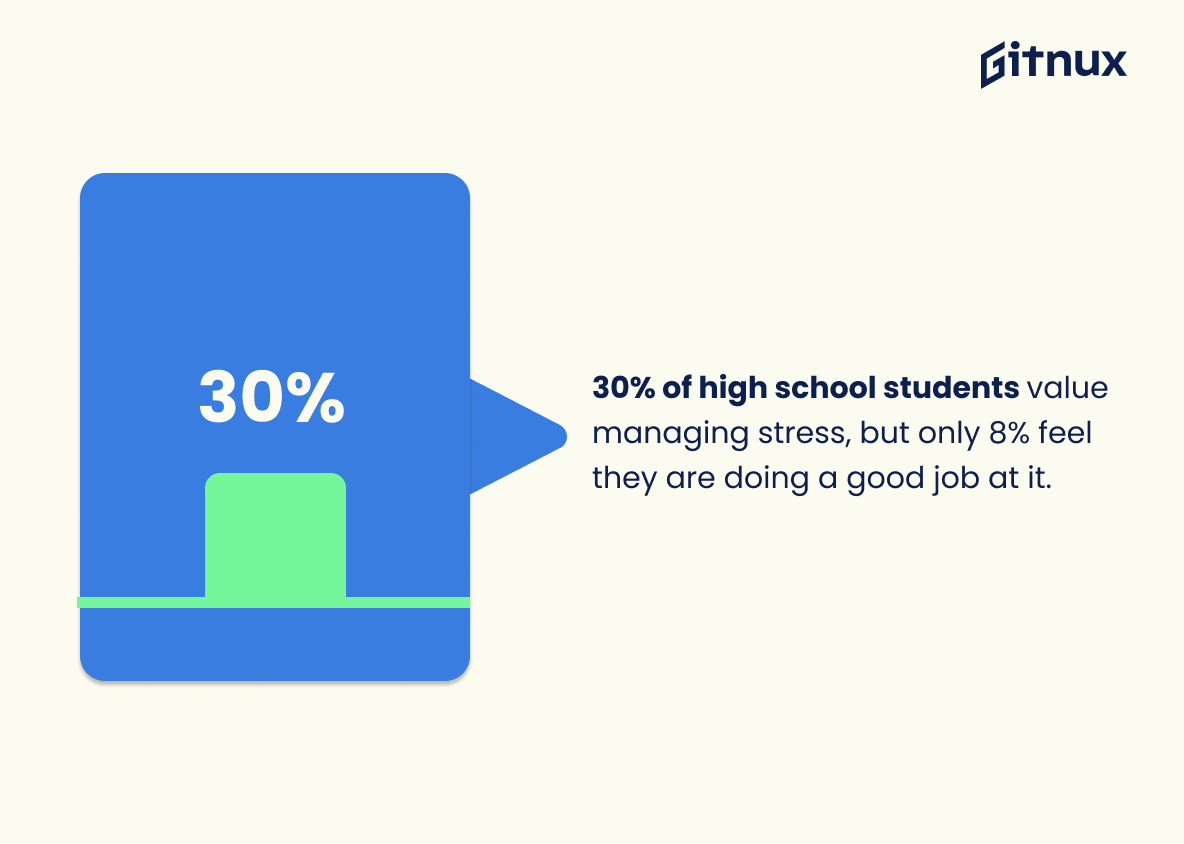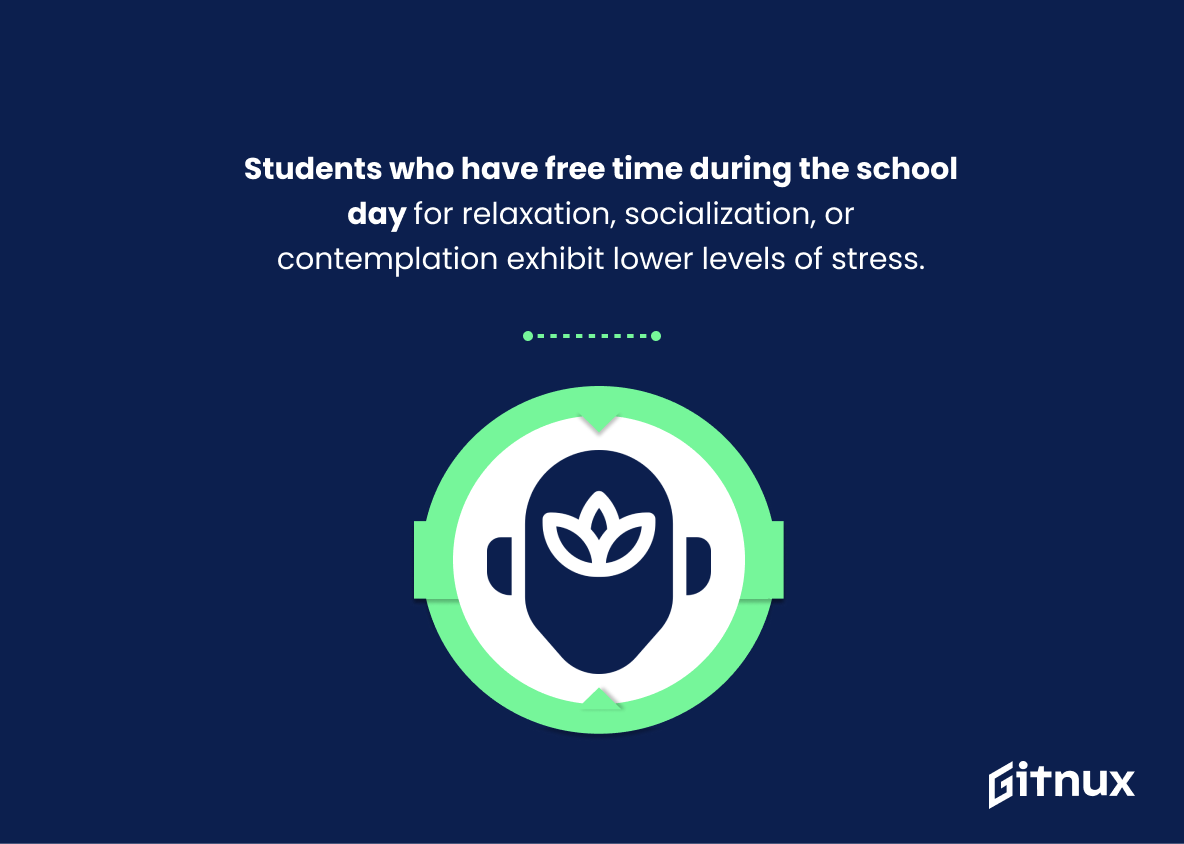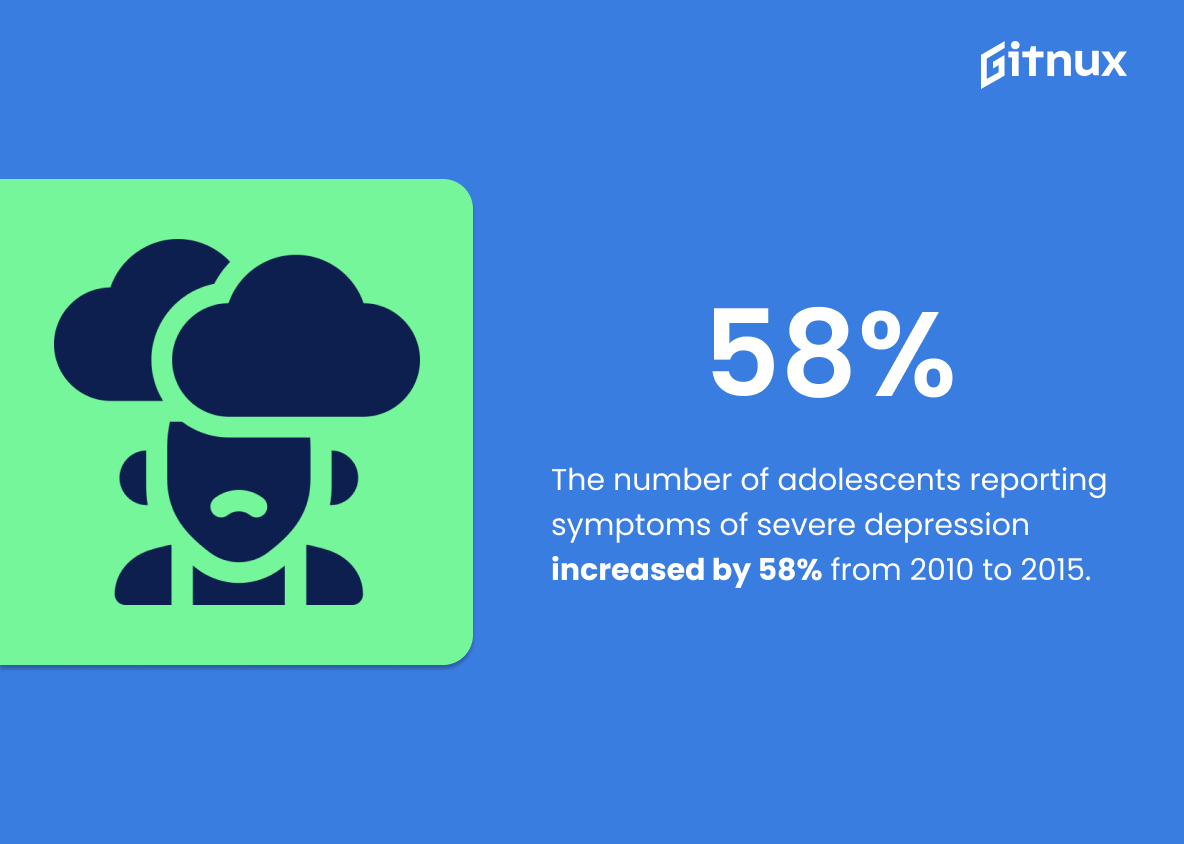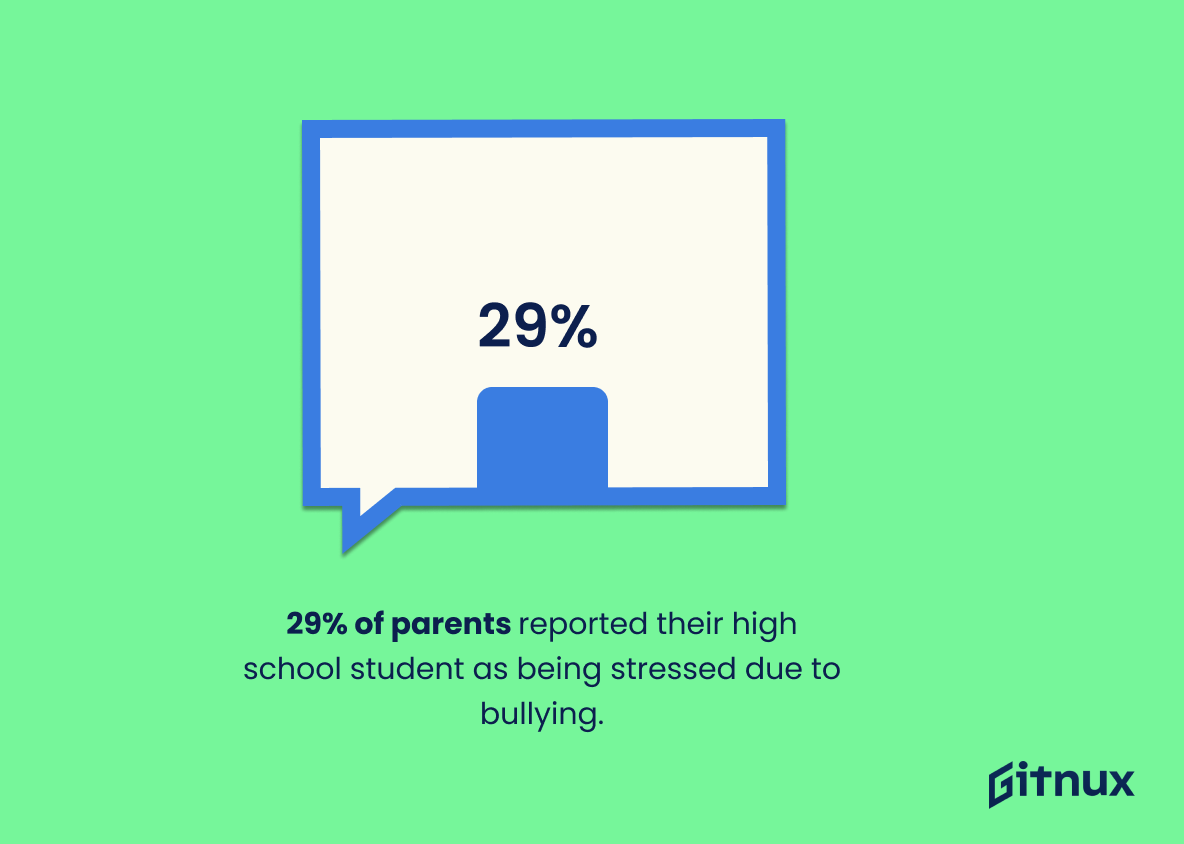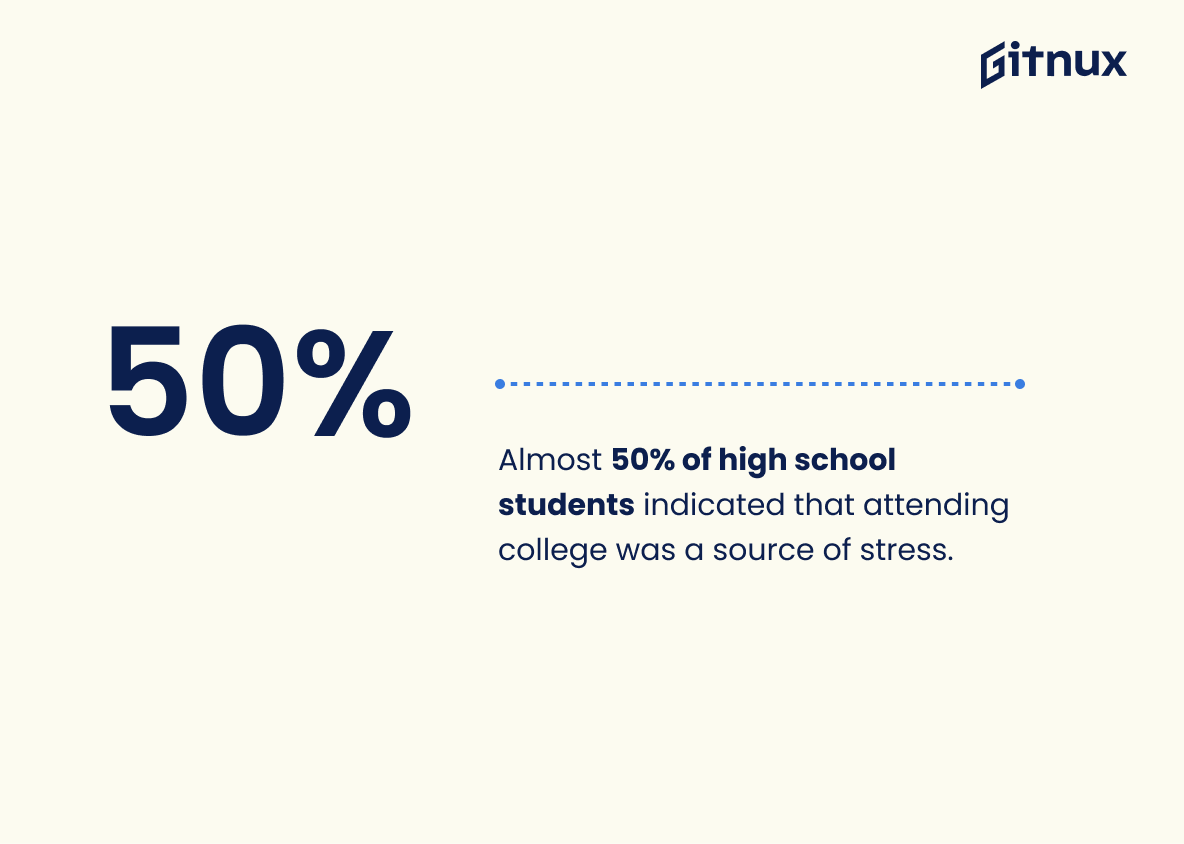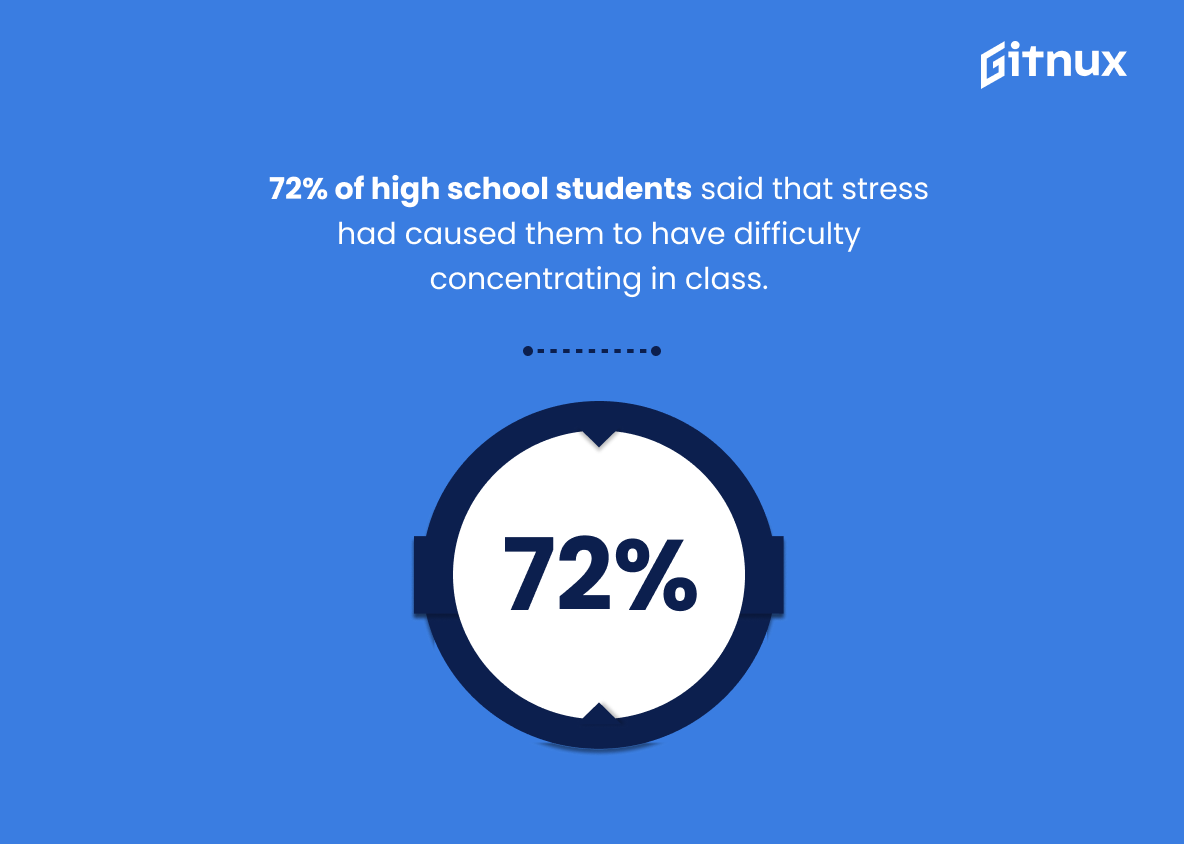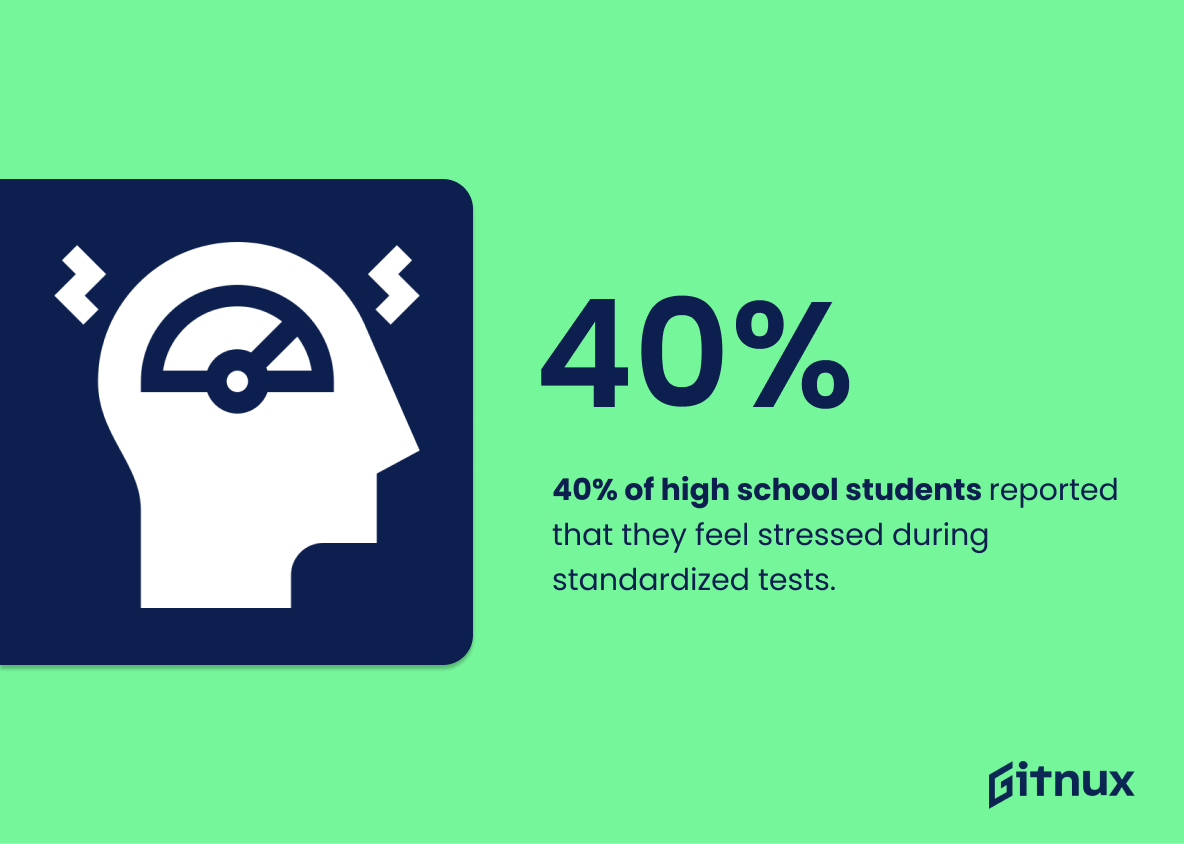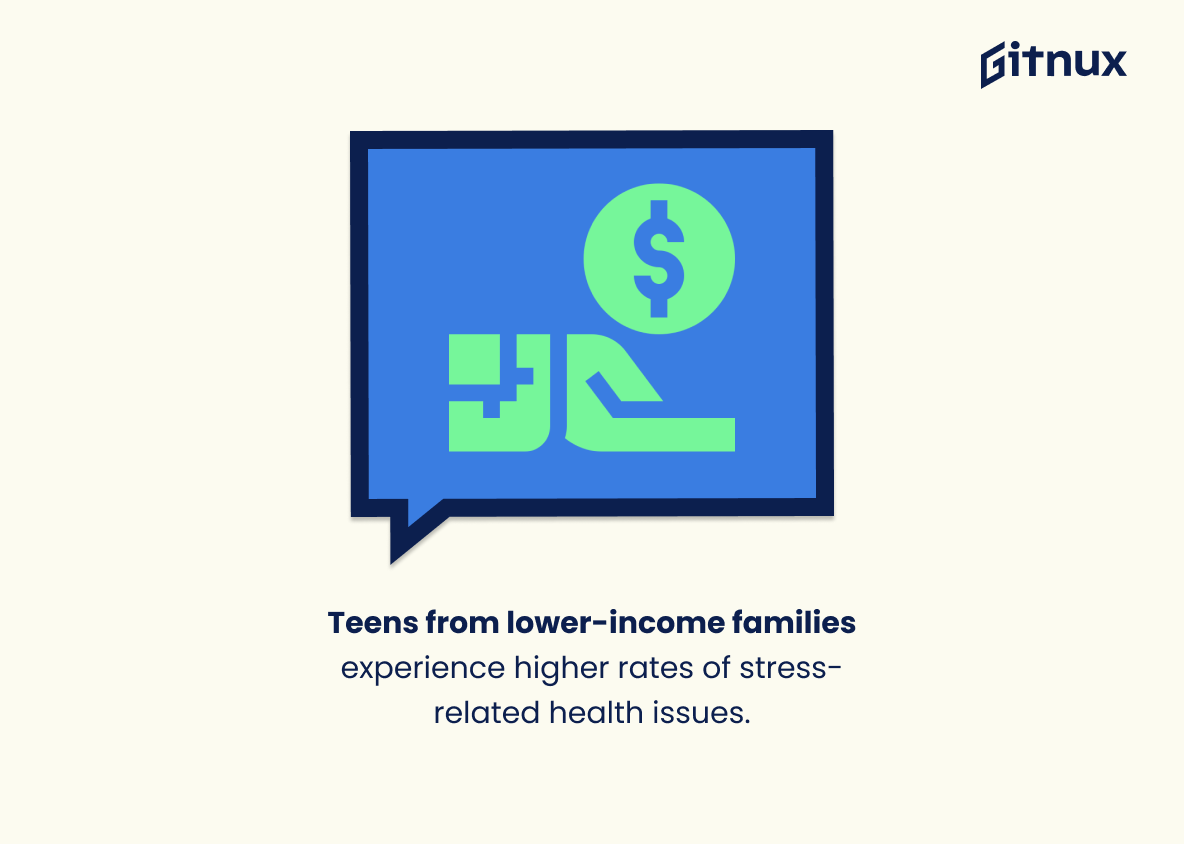High school students are facing an unprecedented amount of stress in their daily lives. According to a 2013 report from the American Psychological Association, 45% of high school students say they experience a great deal of stress on a daily basis. Furthermore, 83% reported that school was a significant source of this stress and over 27% felt extreme levels during the academic year. Additionally, more than 30% said they had been feeling sad or hopeless almost every day for two weeks or longer while 18 percent admitted to seriously considering suicide in the last 12 months.
Girls were found to be more likely than boys to suffer from both depression and higher levels of stress with 38 percent reporting high amounts compared with 26 percent among males. In addition, only 8 percent feel like they are doing well managing their own personal stresses despite 30 percent recognizing its importance; 56percent who participate in extracurricular activities also experienced greater pressure as did 54percent due to homework demands alone.
The number adolescents suffering severe depression increased by 58%, accordingto 2017 data released by APA while 29percent cited bullying as another major factor contributing towards student anxiety levels along with lackof sleep (43%) which can lead topotential health risks such as headachesand weight loss if not addressed properlyby getting at least eight hours per nighton average . College admissions alsoplayed into these worrieswith nearly 50percent citing itas stressful eventwhile 35reported difficulty balancingtheir studies and social life togethereffectively . Finally , lower-incomefamilies have seen even higher ratesof mental health issues amongst teensat 72%.
High School Students Stress Statistics Overview
Over a quarter (27%) of high school students report feeling extreme stress during the school year.
This statistic is a stark reminder of the immense pressure that high school students are under. It highlights the need for more support and resources to help students manage their stress levels and ensure that they are able to thrive in their academic and personal lives.
More than 30% of high school students reported feeling sad or hopeless almost every day for 2 or more weeks in a row.
This statistic is a stark reminder of the immense pressure that high school students are under. It paints a picture of a generation of young people struggling to cope with the demands of their studies, social lives, and extracurricular activities. It is a call to action for parents, teachers, and administrators to take steps to reduce the stress levels of high school students and ensure that they are able to thrive in their academic and personal lives.
Nearly 1 in 5 teenagers (18%) reported they seriously considered suicide in the last 12 months.
This statistic is a stark reminder of the immense pressure that high school students are under. It highlights the fact that many teenagers are struggling to cope with the demands of school and life in general, and that this can have serious consequences. It is a call to action for parents, teachers, and other adults to be aware of the signs of distress in young people and to provide support and guidance to help them manage their stress.
30% of high school students feel that managing stress is extremely important, but only 8% feel they are doing a good job managing it.
This statistic serves as a stark reminder of the reality that high school students are facing when it comes to stress management. Despite the fact that a majority of them recognize the importance of managing stress, only a small fraction feel that they are doing a good job at it. This highlights the need for more resources and support to help high school students better manage their stress.
Students who have at least one period of free time during the school day for relaxation, socialization, or contemplation exhibit lower levels of stress.
This statistic is significant in the context of high school student stress statistics because it suggests that providing students with a period of free time during the school day can be beneficial in reducing stress levels. This indicates that schools should consider implementing such a policy in order to help students manage their stress levels more effectively.
The number of adolescents reporting symptoms of severe depression increased by 58% from 2010 to 2015.
This statistic is a stark reminder of the growing mental health crisis among high school students. The 58% increase in adolescents reporting symptoms of severe depression in just five years is a clear indication that the stress levels of high school students are reaching alarming levels.
29% of parents reported their high school student as being stressed due to bullying.
This statistic is a stark reminder of the prevalence of bullying in high school and the toll it takes on students. It highlights the need for schools to take a proactive approach to addressing bullying and providing support for students who are struggling with the effects of bullying. It also serves as a reminder to parents to be aware of the signs of bullying and to take action if they suspect their child is being bullied.
Almost 50% of high school students indicated that attending college was a source of stress.
This statistic is a stark reminder of the immense pressure that high school students face when it comes to their future. It highlights the fact that college is a source of stress for many, and that this stress can have a significant impact on their mental health and wellbeing. It is a reminder that we need to be aware of the pressures that high school students face and provide them with the support they need to make the transition to college as smooth as possible.
35% of high school students struggle to balance their school and personal lives.
This statistic is a stark reminder of the immense pressure that high school students face in their daily lives. It highlights the need for more support and resources to help students manage their workloads and personal lives. It also serves as a call to action for parents, teachers, and administrators to recognize the struggles of high school students and provide them with the necessary tools to help them succeed.
72% of high school students said that stress had caused them to have difficulty concentrating in class.
This statistic is a powerful indicator of the prevalence of stress among high school students, and its effects on their ability to focus in class. It highlights the need for schools to take steps to reduce the amount of stress students are feeling, and to provide support to those who are struggling. This statistic is a call to action for educators, administrators, and parents to take steps to ensure that high school students are able to focus in class and succeed in their studies.
40% of high school students reported that they feel stressed during standardized tests.
This statistic is a telling indication of the amount of pressure that high school students are under when it comes to standardized tests. It highlights the need for more support and resources to help students manage their stress levels and perform to the best of their abilities.
Teens from lower-income families experience higher rates of stress-related health issues, such as sleep problems, substance use, and risky behaviors.
This statistic is a stark reminder of the disparities that exist between teens from different socioeconomic backgrounds. It highlights the fact that lower-income teens are more likely to suffer from stress-related health issues, such as sleep problems, substance use, and risky behaviors. This is an important issue to address, as it can have a significant impact on the overall well-being of these teens.
65% of high school students experience academic stress.
This statistic is a stark reminder of the immense pressure that high school students face on a daily basis. It highlights the need for more support and resources to help students manage their stress levels and succeed academically. It also serves as a call to action for parents, teachers, and administrators to take steps to reduce the amount of stress that students experience.
Conclusion
The statistics presented in this blog post demonstrate the prevalence of stress among high school students. 45% of high school students report experiencing a great deal of stress on a daily basis, and 83% cite school as a significant source. Over 27% feel extreme levels of stress during the academic year, while 30% consider managing their stress to be extremely important but only 8% believe they are doing so effectively. Girls experience higher rates than boys with 38%, compared to 26%. Additionally, 18 percent reported seriously considering suicide in the last 12 months and 54 % cited homework as an additional source for their distress.
High-achieving schools have been found to have higher levels of health problems related to student’s increased level of anxiety due to pressure from peers or teachers; 35 % struggle balancing personal life with academics; 40 % felt stressed during standardized tests; teens from lower income families experienced more sleep issues, substance use and risky behaviors; 65 % had academic related worries . Finally ,students who participated in extracurricular activities were also found at greater risk (56%) along those who did not get enough sleep (43%).
These findings suggest that there is an urgent need for interventions aimed at reducing these alarming numbers by providing support systems such as counseling services or mental health awareness programs within educational institutions which can help reduce feelings associated with depression and suicidal ideation amongst adolescents today.
References
0. – https://www.www.ncbi.nlm.nih.gov
1. – https://www.www.cdc.gov
2. – https://www.my.vanderbilt.edu
3. – https://www.www.tandfonline.com
4. – https://www.www.apa.org
5. – https://www.www.mhanational.org
6. – https://www.www.jahonline.org
7. – https://www.apnorc.imgix.net
8. – https://www.www.edweek.org
